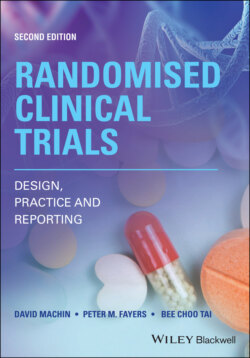Читать книгу Randomised Clinical Trials - David Machin - Страница 96
Dose modification
ОглавлениеTopical application of the test drugs are not expected to produce severe side effects. However, if toxicity occurs following commencement of therapy, the number of applications, of either S or C, should first be reduced from 3 to 2 and then from 2 to 1 per day. Should the patient continue to experience the same, or greater levels of toxicity, S or C therapy should cease.
The design structure of the SQOLP01 (1999) trial in patients with oral lichen planus has been illustrated in Figure 2.1 while the panel above from the protocol describes the treatments given together with dose modifications should they be required. As was the case for the mattress types, the topical treatments concerned and how they should be applied are easily expressed. Clear guidance is given for dose reduction (and possibly cessation) should ‘severe side effects’ occur although none were expected.
On the other hand, in protocol ENSG5 (1990) it was well understood by all the investigators and associated clinical teams that the chemotherapy schedule was indeed highly toxic and that many complex clinical situations could arise as a consequence. However, the teams concerned with treating these children and young adults were all in specialist paediatric oncology centres and there was an established network through which the clinical teams were constantly seeking each other’s advice. Effectively, a ‘virtual’ case review would be established as and when necessary. However, this protocol was launched and completed some time ago and the statement contained within the protocol might be inadequate for current approval processes, which demand greater precision in the specification of details and mechanisms.
